Thorn Carving Item Number: Af370 from the MOA: University of British Columbia
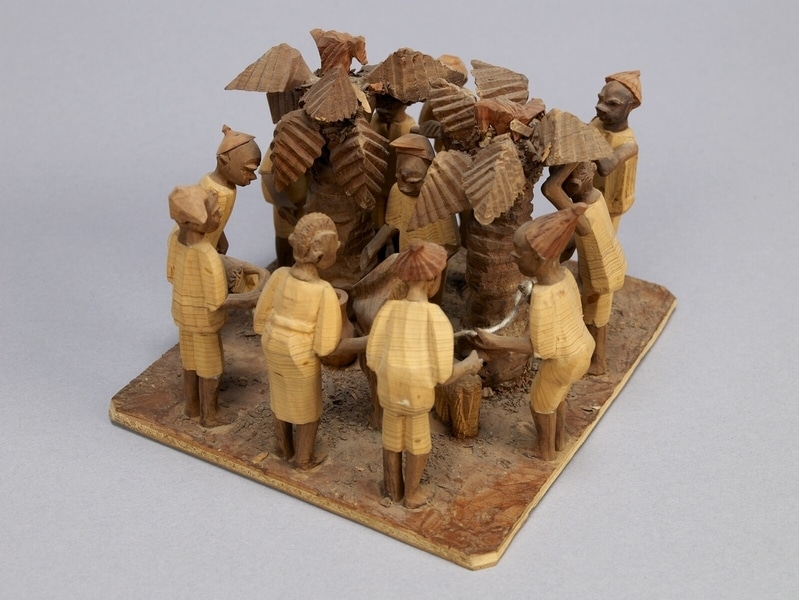
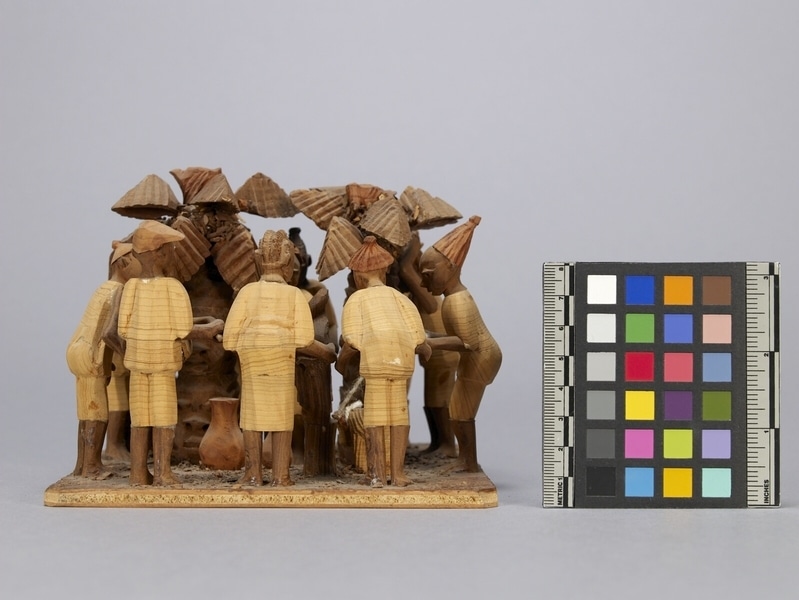
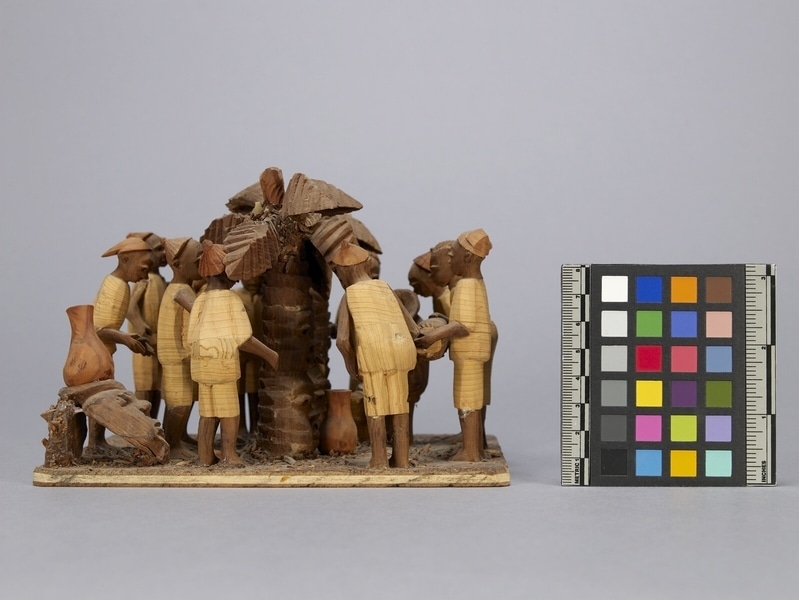
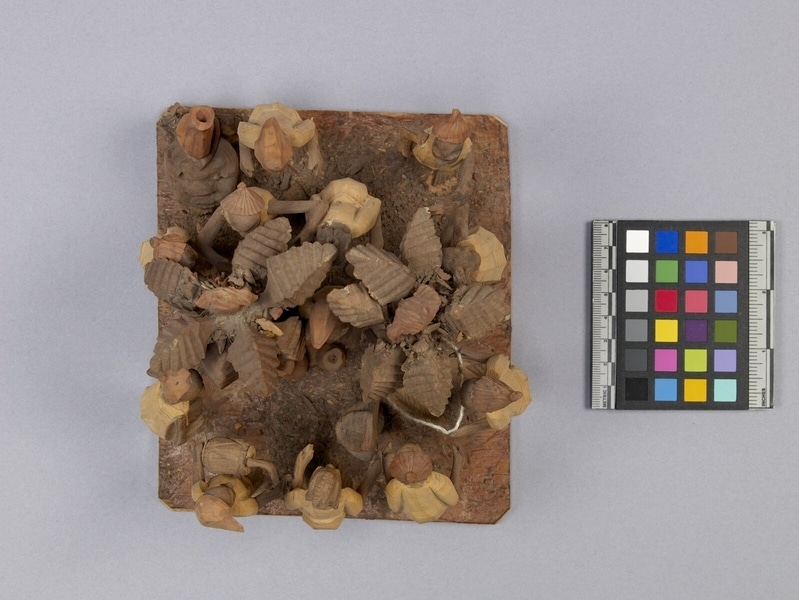
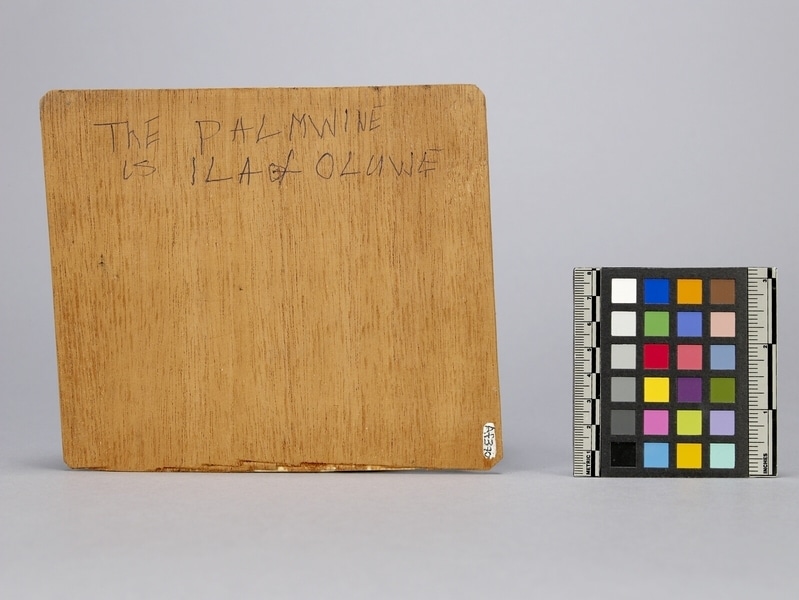
Description
A ritual scene with twelve figures representing people, one animal, two birds, two masks, three containers, and a drum. Two mask-like faces have been carved into the trunk of one tree and one into the trunk of the other. Eleven of the participants are surrounding and facing the trees between which is standing the twelfth. One participant is holding the head of a dog-like animal. Another is holding a drum and a stick. All figures are standing in a relaxed naturalistic posture. Three, including the central figure, are wearing skirted garments while the others are wearing trousers and shirts. Nine are wearing hats of various types. A bird is perching on top of each tree. At the left back corner, there is a mask with an attached container leaning against a supporting wall. The second mask, on a base, and two containers are standing in front of the trees, and the central figure. At the top of each mask, there is an oval tilted object, possibly a container for oil. The clothing and animal are light yellow-brown. Human skin, hair, trees, masks, and drum are dark brown. The birds, hats, and containers are light red-brown. Variegated shavings are thinly scattered on the base.
History Of Use
Thorn carvings are miniatures depicting scenes from Nigerian life. This type of carving began circa 1930. Thorns vary in size. They can be as large as 12.7 cm. long and 9.6 cm. wide. They are comparatively soft and easily carved. The light yellow-brown thorn and the dark brown thorn come from the Ata tree; the light red-brown thorn comes from Egun trees. The parts are glued together with viscous paste made from rice cooked with water. They are carved by men.
Narrative
Associated with the god (Ifa) of palm-nut divination.
Cultural Context
craft; tourist art
Item History
- Made in Nigeria before 1972
- Collected during 1972
- Owned by Andrew Stewart and Jessie Stewart before February 8, 1980
- Received from Andrew Stewart (Donor) and Jessie Stewart (Donor) on February 8, 1980
What
- Name
- Thorn Carving
- Identification Number
- Af370
- Type of Item
- carving
- Material
- atum thorn, egun thorn, wood and rice adhesive
- Manufacturing Technique
- carved and glued
- Overall
- height 12.9 cm, width 17.8 cm, depth 15.5 cm
Who
- Culture
- Yoruba
- Previous Owner
- Andrew Stewart and Jessie Stewart
- Received from
- Andrew Stewart (Donor) and Jessie Stewart (Donor)
Where
- Holding Institution
- MOA: University of British Columbia
- Made in
- Nigeria
When
- Creation Date
- before 1972
- Collection Date
- during 1972
- Ownership Date
- before February 8, 1980
- Acquisition Date
- on February 8, 1980
Other
- Item Classes
- carvings & sculpture
- Condition
- good
- Accession Number
- 0590/0056